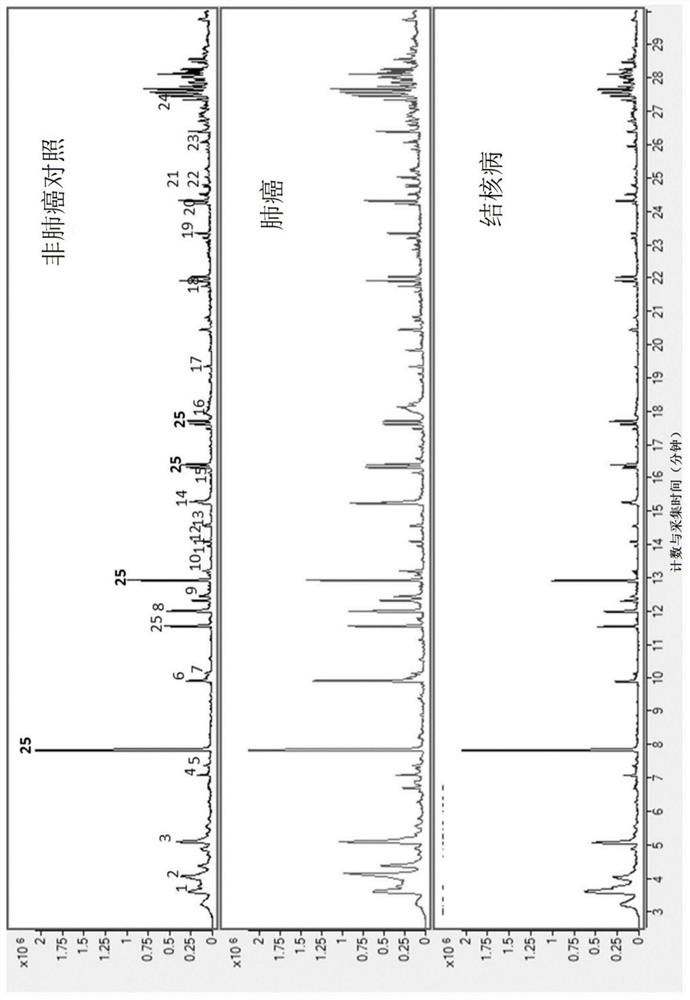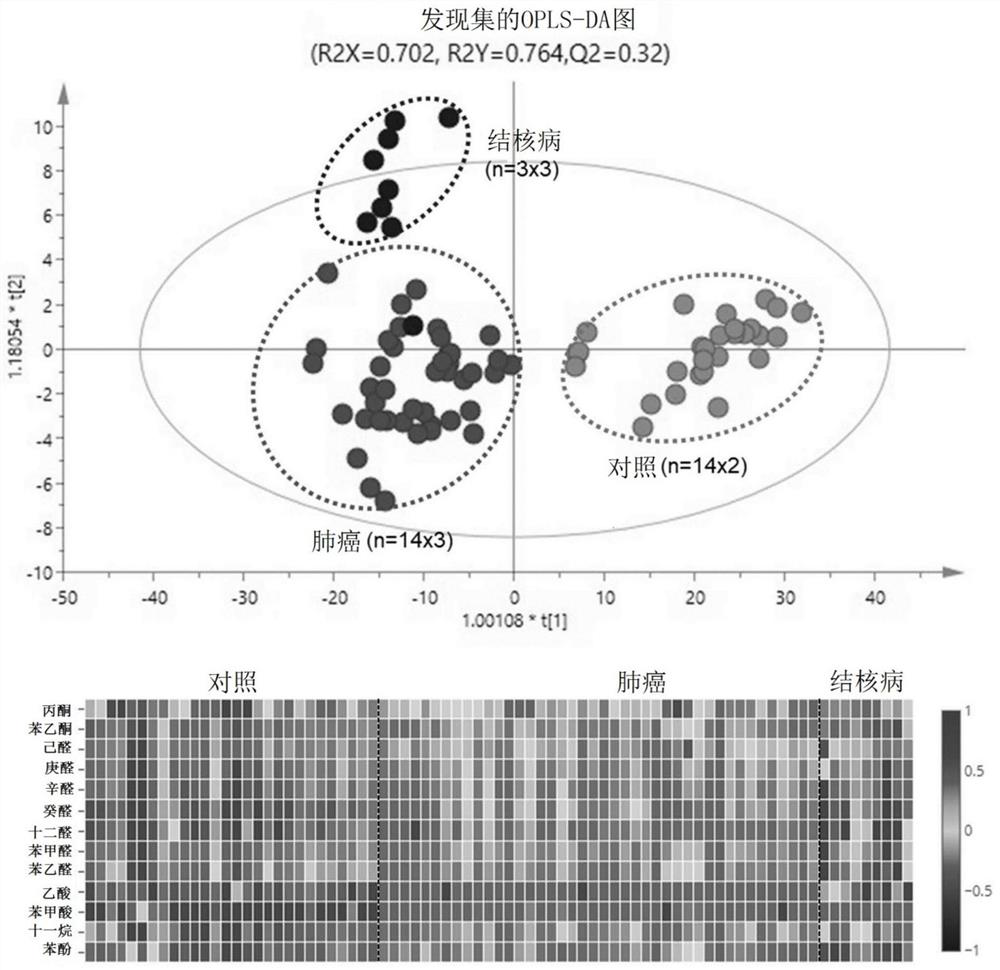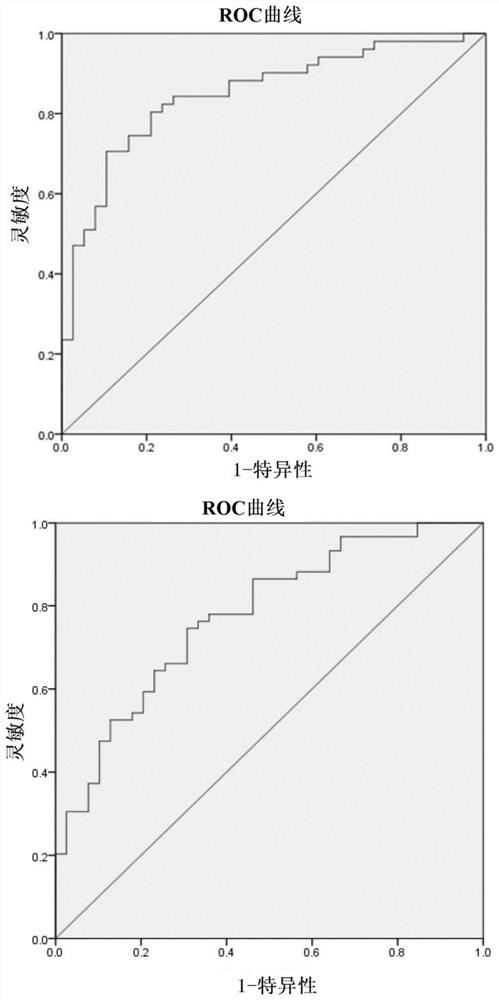Method of detecting cancer and/or tuberculosis
A cancer, subject technology, applied in the field of cancer and/or tuberculosis detection, which can solve problems such as difficult treatment of lung cancer
- Summary
- Abstract
- Description
- Claims
- Application Information
AI Technical Summary
Problems solved by technology
Method used
Image
Examples
example 1
[0185] figure 1 Total ion chromatograms (TICs) for each representative set of samples are shown, with each peak labeled with the compound name. Using the kruskal-wallis test and VIP calculation in the OPLS-DA model, a total of 13 compounds were found to be statistically different. figure 2 a) is the OPLS-DA score map of VOCs in the discovery set. In this graph, each breath sample is represented by a dot. It showed a clear distinction between lung cancer subjects and control subjects and between lung cancer patients and tuberculosis patients. The relative concentrations of each VOC were linearly normalized to a range of -1 to 1 and plotted at figure 2 b) as shown in the color-coded diagram. Receiver operating characteristic (ROC) analysis was performed on discovery set samples using 13 compounds. The area under the curve (AUC) for each compound is listed in Table 4. Among these 13 compounds, 8 compounds with AUC values greater than 0.75 (hexanal, heptanal, octanal, be...
example 2
[0187] In this study, seven aldehydes (including hexanal, heptanal, octanal, decanal, dodecanal, benzaldehyde, phenylacetaldehyde) were found in the breath of lung cancer patients compared to non-lung cancer controls content increased. This may be due to elevated levels of alcohol dehydrogenase (ADH) in cancer tissue. It is believed that ADH is overactivated in cancer cells, which means that cancer cells have a higher ability to oxidize alcohols to aldehydes. Alcohol is an alkane product produced by cytochrome p450, which in turn is a lipid peroxidation product, a process that is also upregulated in cancer cells. The breath samples of lung cancer patients have higher levels of hexanal and heptanal. These aldehydes are likely products of cancerous pathological processes. Benzaldehyde was found to be increased in lung cancer cell cultures. Higher levels of the alkane undecane were also found in this study. Undecane is a by-product of lipid peroxidation caused by reactive ox...
example 3
[0194] in conclusion
PUM
| Property | Measurement | Unit |
|---|---|---|
| Gain coefficient | aaaaa | aaaaa |
Abstract
Description
Claims
Application Information
 Login to View More
Login to View More - R&D
- Intellectual Property
- Life Sciences
- Materials
- Tech Scout
- Unparalleled Data Quality
- Higher Quality Content
- 60% Fewer Hallucinations
Browse by: Latest US Patents, China's latest patents, Technical Efficacy Thesaurus, Application Domain, Technology Topic, Popular Technical Reports.
© 2025 PatSnap. All rights reserved.Legal|Privacy policy|Modern Slavery Act Transparency Statement|Sitemap|About US| Contact US: help@patsnap.com



